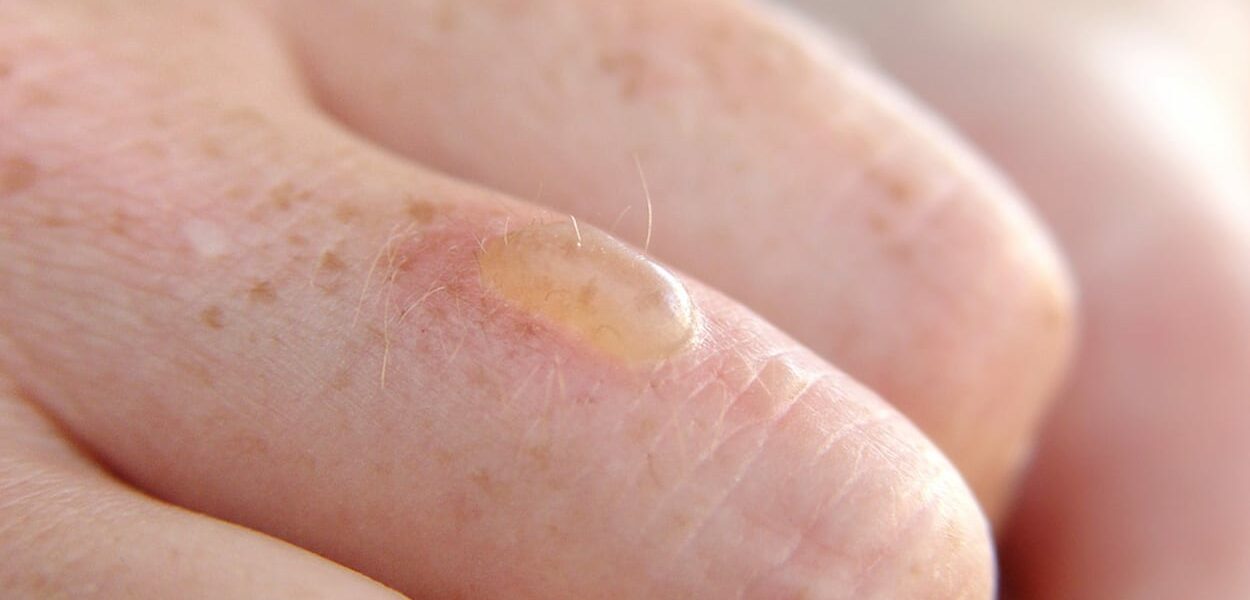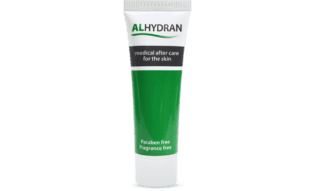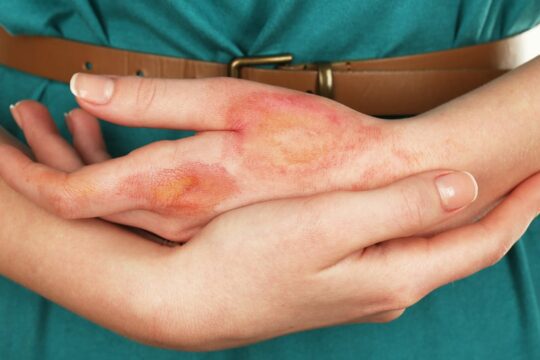How do you treat a burn blister?
A burn blister is a second-degree burn, which you can treat yourself in most cases. It is recognisable as a fluid-filled blister that develops on your skin. What has in fact happened is that the epidermis (outer skin layer) has detached itself from the underlying skin layers.
Take care! A burn blister can be superficial or deep. It is not possible to distinguish between the two visually. However, if the wound has not healed well within 2 weeks or if you have scar complaints, see your general practitioner or a burn centre. Your skin functions are probably damaged and you may have a deep, second-degree burn.
How a burn blister develops
A burn blister arises from contact with heat. For example hot tea or coffee, frying oil, a hot engine or simply fire. Contact with extreme cold can also cause burn blisters. For example contact with the CO2 in a fire extinguisher. Chemical substances can also cause fire blisters.
Avoid infection
Burn blisters generally heal well, but there is always the chance of infection. If this happens, skin which has remained intact can be destroyed, as a result of which it cannot be replaced by new skin. The results of an infection are therefore quite serious.
Many people think they should prick a burn blister. You must never do this! It massively increases the chances of infection. It is best to cover a burn blister with sterile gauze. This minimises the chance of infection. (See also tip 4, below.)
The correct treatment
Cooling and keeping clean are the most important ways to treat a burn blister. Your body ensures that your burn blister heals automatically, within a period of days or a few weeks.
Resources (burn specialists):
- NHS
First aid for burns - Dutch Burn Center Beverwijk (RKZ)
Burn treatment - American Burn Assiciation
Initial First Aid Treatment for Minor Burns
Below are some tips for the best self-treatment of burn blisters:
1. Water!
Apply as soon as the blister occurs. Hold the blister under cold water for 20 minutes. But take care: if you have to cool a large part of your body you run the risk of hypothermia.
2. Be careful with clothing!
If the burn blister is under your clothing, remove the clothing only after checking that the blister is not attached to it. Not sure if it is stuck to your clothing? Then go to a hospital casualty department.
3. Bandaging
Infection is always a risk with burn blisters. To prevent infection, cover the burn blister with a sterile gauze compress. Do not apply it too tightly!
4. Use ALHYDRAN scar cream
ALHYDRAN rehydrates the skin on and around the burn blister. As a result it heals quicker and the chance of retaining a scar is very small. Use ALHYDRAN when the skin has healed and closed, or on closed sections.
Should you consult your doctor?
Yes, in the following cases:
- If you doubt, for whatever reason, whether you can treat the burn blister yourself
- If non-painful, yellow-white spots develop
- If the skin has not healed and closed within 2 weeks
- If the area of the burn blister is larger than the palm of your hand
- If your clothing is stuck to your skin
- If the burn blister is on your face or in some other problematic location
- If the patient is a baby or young child, always visit your general practitioner for safety’s sake



